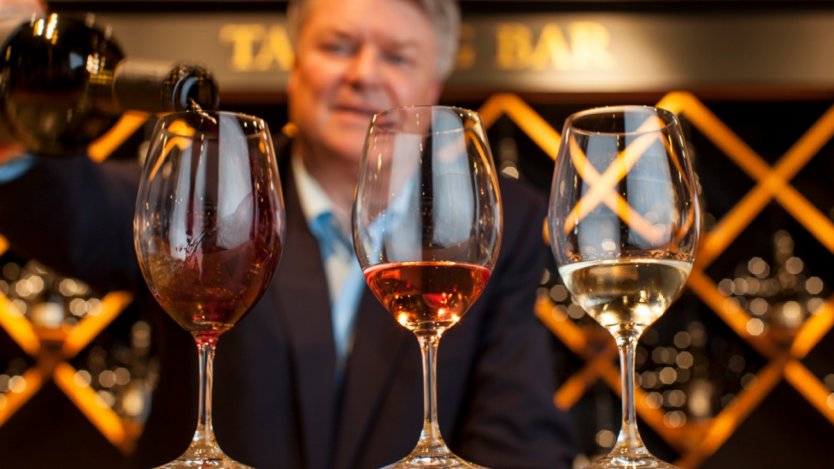Canada’s wine has come a long, long way. Our domestic wine industry has only recently put away childish things and become an adolescent, awkwardly moving towards adulthood.
With only a short legacy of premium winemaking, Canada was once thought “too cold” for growing wine grapes, and though that has since been handily proven wrong, for a long time, winemaking in Canada was focused on cheap, plonk-y juice that only with the most liberal of interpretations could be consumed with Canadian pride. On the plus side, our domestic industry was pretty small, so we really didn’t make that much of it, and we, as a people, had no problems sourcing and enjoying the fine wines from around the world, rather than hopelessly supporting a faltering industry making bottom tier juice. We developed a taste for the world’s wine, which forward-looking winemakers said, “Yeah, I think I can make something like this,” and did.
Moving on to the heady days of the 1990’s, wine started really getting good, taking steps away from commercial efforts toward tasty wines, and not just in a “not bad for Canadian wine, eh?” sort of way. Smaller producers, making wine they were proud to put their names on and built with an eye for improvement, are looking for better locations for vineyards, microclimates even, and some real innovation when it came with what to plant and where to plant it.
This is the joy of Canadian wine. Aside from a few swaths of large, mediocre vineyards in Ontario destined for “Cellared in Canada” wines, or “International-Canadian Blend” shite, most vineyards are very small and are really about producing the best wine, most suitable for the site.
Wine production in Canada is mostly centered on the Okanagan Valley of British Columbia and the Niagara Peninsula of Ontario, with other areas such as Vancouver Island, Prince Edward County, and Nova Scotia producing smaller amounts, but with very promising results. Canadian wine is definitely making its way onto the world stage. It’s winning international attention, slowly getting distribution outside of the country and it also doesn’t need the “pretty good for Canada” apology/compliment anymore. I’ve singled out a few varieties that I’m not a huge fan of, but that I’m very proud to share.
Wines of Ontario
Ontario can reach sublime heights (in certain spots) with pinot noir and chardonnay, and some of the finest rieslings I have ever tasted have come from here too. In all but the hottest years, some of their reds still seem to have some issues ripening, meaning if you love your cabernet sauvignon to be a little weedy, pyrazine-laden, or bell pepperific, you’ll want to try them. Ontario does make some pretty magical red blends including those meritage blends, and some less conventional ones, though I’m rarely impressed with Ontario’s viogniers or sauvignon blancs.
I’m often disappointed by weedy or overly green cabernet sauvignons, limp pinot gris, and vidal; it’s just not a grape I love. On the flipside of that, chardonnay, riesling, and pinot noir--oh my! There are some true stunners I’m happy to bang the drum for. Plus, some exceptional sparkling wines.
Highly Recommended
Henry of Pelham Baco Noir Niagara Peninsula, Ontario. $14-18. Available in B.C., AB, ON, and Quebec. A well-regarded red hybrid grape that brings earthy and slightly smoky berry fruits without too much tannin. A barbecue companion for sure.
Stratus Red, Niagara Peninsula, Ontario. $40-45. Available in AB, ON, Newfoundland, and Quebec. Showcasing the strength of blending and the overall quality of wine in Canada, the winery managers to draw out the very best of each of the grapes in the blend each year. Always happy to see this pop out of the cellar.
Charles Baker Riesling, Niagara Peninsula, Ontario. $35-40. I’ll always have a soft spot for Charles’ rieslings. Bright, generous, and with lively acidity, it’s a glass that must have a hole in it--since I’m always refilling it.
Norman Hardie County Pinot Noir, Prince Edward County, Ontario. $40-45. Available in ON, and Alberta. One of the great winemakers of Canada. I’m always thrilled how his wines are consistently among my favourite chardonnay and pinots I try each year. His pinot? Perfect.
Wines of British Columbia
British Columbia is chock-a-block with small wineries, and most, if not nearly all, seem to follow the small block philosophy of planting. Vineyards are built of smaller blocks, each one selected for a single grape variety. “Block XYZ gets direct sunlight until 10 p.m.? What grape is best for that spot?” This sort of planning means that I don’t find many grapes (even ones I hate) are truly wasted in the Okanagan. Merlot and syrah are wonderful with some recent accolades for pinot noir coming along. For whites, some luscious viogniers, rieslings, and chardonnay are easy to find.
I’m still thrilled as punch by the kickass merlot, the beautiful cabernet francs and some top shelf riesling, while B.C, syrah is something that's very exciting to drink and I love watching the development of the grape in recent years. For the disappointments, let’s point the finger at some disappointing zinfandels, some dour and overly serious cabernets, and some weird pinot blanc. I’m still surprised at how many people are growing some strange grapes on Vancouver Island too.
Highly Recommended
Van Westen Viognier, Okanagan Valley, British Columbia. $25-30. Available in B.C. and Alberta. Intense, tropical, floral, and just plain lovely. One of my favourite viogniers from one of my favourite vigneron/winemakers each year.
Tantalus Riesling, Okanagan Valley, British Columbia. $20-29. Available in B.C., AB, ON, and even Quebec. Every wine lover loves good riesling. Strikes a near-perfect balance of sweetness (it’s quite dry), acid, mineral, and apple-type fruit. So freakin’ delicious.
Laughing Stock Syrah, Okanagan Valley, British Columbia. $35-50. Available in B.C., AB and possibly some other markets. A fantastic example of what is happening with B.C. syrah: meaty, smoky, touches of cured meat, violets and spice. Wicked awesome.
Meyer Family Vineyards McLean Creek Pinot Noir Okanagan Valley, British Columbia. $25-40. Winning several major international accolades, this pinot comes from the up and coming Okanagan Falls region. Seriously good pinot, it's complex, delicious, and conversation-worthy.
Wines of Nova Scotia
Nova Scotia isn’t on everyone’s radar (yet) but some cool things are happening there. Using the broadest brush possible, the province is making some very interesting hybrids in both white and red examples. Leon Millot? It's got a few. The Tidal Bay appellation is responsible for some very tasty whites, and a handful of very respectable sparkling wines are making waves.
Aside from some of the best sparkling wines in the country, they are having some excellent success with l’Acadie Blanc (a white hybrid). Some of the reds can be a little strange, though many are worth trying at least once. Though I don’t know many people that stock up on cases of Lucie Kuhlmann.
Highly Recommended
Benjamin Bridge Brut Sparking Wine, Nova Scotia. $45-55. Widely available in most provinces. Quality-wise, a match for almost any Champagne, and just as much a pleasure to drink. I have a few in my cellar most of the time.













